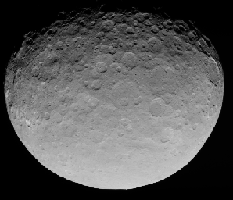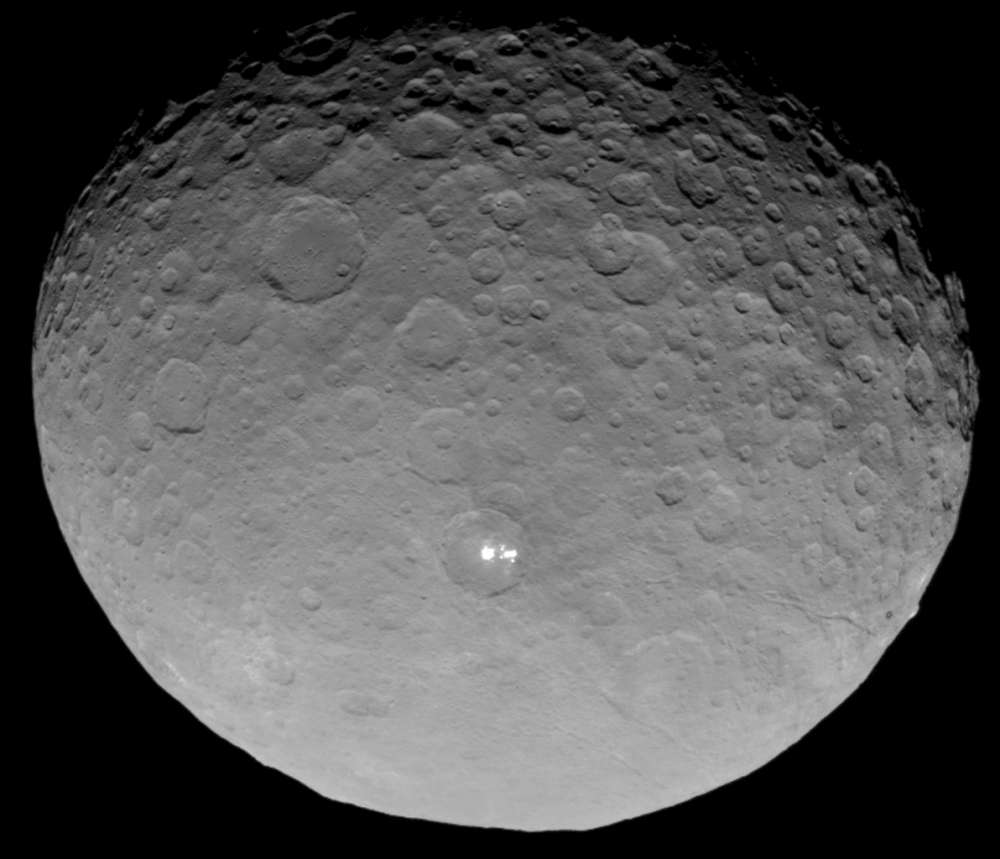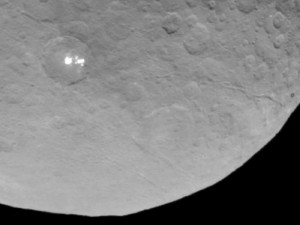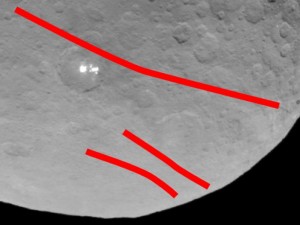Shiny Spot on Ceres
 NASA’s DAWN space mission is the first of it’s kind on many fronts.
NASA’s DAWN space mission is the first of it’s kind on many fronts.
It has visited the planet Vesta and is now nearing Ceres a “dwarf planet”. That’s after a staggering 7 year journey and 5 billion km.
This mission uses a solar powered ion thruster instead of a conventional rocket engine. The ion propulsion system allows it to have a higher efficiency and cover a more ground (space) with the less fuel payload.
On May 4th the Nasa’s DAWN mission took more photos of the famous shiny spots. As of today they have been processed into an animation of these mysterious spots.
This is a fascinating shiny feature that has stumped scientists since it’s discovery.
But now with the DAWN space mission getting closer the details are coming forward.
Here is the latest view.
A closer look reveals what it actually is. It’s Spot the Space Puppy!
In all seriousness this is an extremely interesting mystery (the shiny areas).
Do you think it’s glaciers or some frozen material?
Something shiny suggests that it may have been liquid at some point and then froze in order to create a flat surface. There are two ridges leading up to the crater so that could be related to a source of heat or a source of already liquid material. That’s at 4 and 5 o’clock to the crater with the shiny objects in it.
Here’s what I mean. You can grab the original image at NASA’s site.
Are those cracks or channels from liquid flow? They are pretty straight so I think that suggests cracks.
Could these cracks help explain the appearance of the shiny areas?
Could the “Space Puppy” be a sign of loss of material and those are rifts from sinking? Or could it be that the cause of those faults ejected liquid then froze?
Or is there reason to believe those faults are not connected to “Space Puppy”?
Could the asteroid strike be the cause of leakage from the planet? Or could they be a source of liquid? If the liquid came from the planet, could the faults be an explanation why liquid appeared here and not for other strikes?
Either way I’m betting on on solid water at the moment since water vapor was detected in January 2014. So that confirms water gets released.
If I’m right we could be seeing the first ocean of Ceres. Also the first ocean formations on camera.
Related
https://www.youtube.com/watch?v=oaZ8nb48-zg
Posted 2015-05-11




